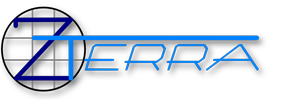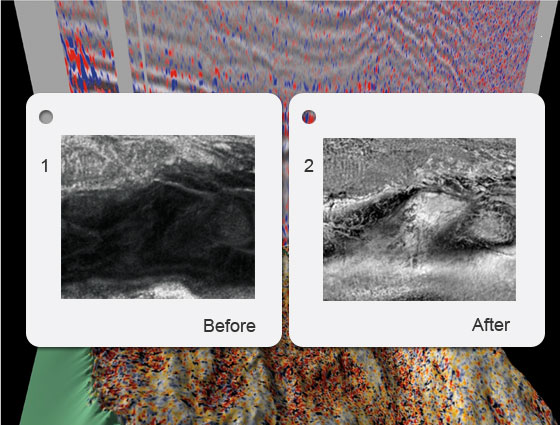Z-Terra Diffraction Imaging is a revolution in super-resolution imaging for clastic and carbonate reservoirs as well as for shale resource plays, offering the highest resolution imaging and mapping of both structural and stratigraphic discontinuities and sub-wavelength features.
Correct identification of geological discontinuities is a salient challenge in the interpretation of seismic data. Diffraction imaging can be used to create a high resolution 3-D volume identifying small scale faults, pinch-outs, salt flanks, reflector unconformities or, in general, any small objects whose spatial extent is less than the seismic wavelength. This volume can be used in conjunction with the structural image from depth migration to deliver a high-precision interpretation of the structural details. 3-D diffraction imaging volumes can be used to identify and visualize the distribution of faults in unconventional shales, automatically delineate salt flanks, or uncover the full extent of reservoirs by mapping pinch-outs.
Our diffraction imaging implementation attenuates energy from specular reflections during the Kirchhoff time or depth migration process. The kinematic properties of diffractions are different from those of reflections. When preparing the data for diffraction imaging, our time processing avoids the conventional time processing steps that attenuate diffractions by enhancing reflector continuity.
With maximum resolution diffraction imaging of natural fractures and subtle stratigraphic discontinuities you’ll optimize stimulation, well placement, and production.
Z-Terra’s diffraction imaging provides the maximum resolution imaging:
- To identify potential sweet spots in unconventional shale reservoirs and conventional carbonate reservoirs
- To map the areal distribution of natural fractures
- To detect and map subtle stratigraphic changes and discontinuities
- To output prestack diffraction gather data to properly image fracture amplitude as a function of azimuth
The images are clear — so is the choice: Z-Terra Diffraction Imaging.

